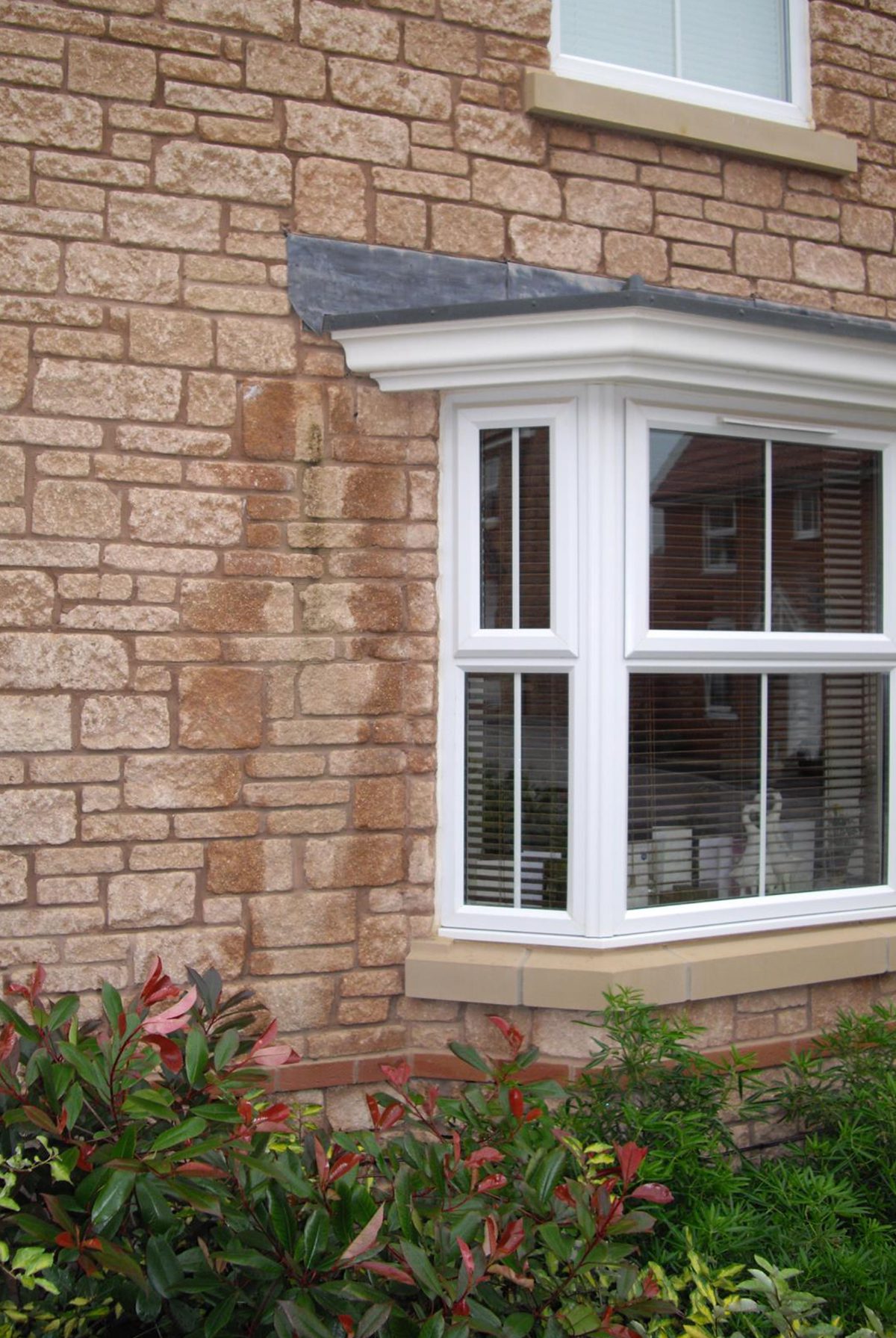Cavity Trays combats lateral transference in cavity walls.
The traditional bay window is a good example of a building element that is susceptible to lateral transference. As bay fascia/facade heights increase, so do the number of courses between the (higher) bay roof DPC/flashing level, and the (lower) bay-spanning lintel support level. The greater the vertical distance between them, the greater the bays susceptibility to damp ingress, because the masonry skin on the outside of the bay runs uninterrupted onto the support lintel spanning the bay and supporting the main exterior wall. This type of construction permits a ‘sideways soak’. Severe storms can saturate masonry, following which, water rapidly soaks laterally across the bay.
Horizontal transference between the intersection level and the lintel level can be prevented by installing a preformed DPC cavitray that vertically connects the two levels within the same masonry skin – without adversely interrupting bonding or coursing. This halts dampness before it can track inward.
Type BWVC Bay Window Vertical Cavitrays are manufactured by Cavity Trays of Yeovil and are available to suit brickwork and blockwork coursings. Units are introduced at each end of the lintel and provide a cleverly shaped permanent DPC connection upwardly to the DPC cavitray at roof intersection level. Wind-driven rain saturating masonry to the sides of the bay is thus prevented from continuing soaking laterally. Bonding is maintained (no straight-break through-courses) and an optional insulating strip that wraps and thermally insulates around the BWVC keying provides a heat-loss break.
Cavity Trays Ltd
enquiries@cavitytrays.co.uk
www.cavitytrays.com




